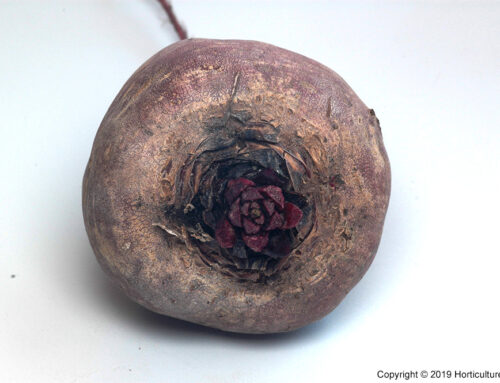
Beetroot seed treatment
Beetroot((By Downtowngal [CC BY-SA 3.0 (https://creativecommons.org/licenses/by-sa/3.0)], from Wikimedia Commons)) seed treatment is mostly done by commercial seed companies. There are instances where local seed can be harvested. In this case it is important to understand why it must be washed so that low stands can be avoided. Beetroot seed appears corky and fairly big compared to other vegetable seeds. The seed is actually a small fruit which contains 2-6 seeds inside. The real seed are small, brown and kidney shaped. One ‘fruit’ can provide 2-6 seedlings. A grower can expect that under normal farming conditions sowing the fruit can provide a good stand of beetroot. This is false hope. The germination rate is actually quote low due to bacteria.
Germination is affected by the high nitrate content of dry seed and it is further suppressed by ammonia formed by the bacteria. That is why beetroot seed treatment is so important. Washing the seed in water before sowing removes 50% of the nitrogen and about 75% of the nitrate.
Beetroot seed treatment is done as follows: all beet seed must be washed in running water for at least 2 hours. After washing it must be dried for at least a day at room temperature before it can be sowed.
Tip: If you are buying seed from a seed company or even a neighbour, ask them if it is treated. You should need about 6-8 kg seed per hectare. Using untreated seed can more than quadruple that requirement and then it becomes expensive.





